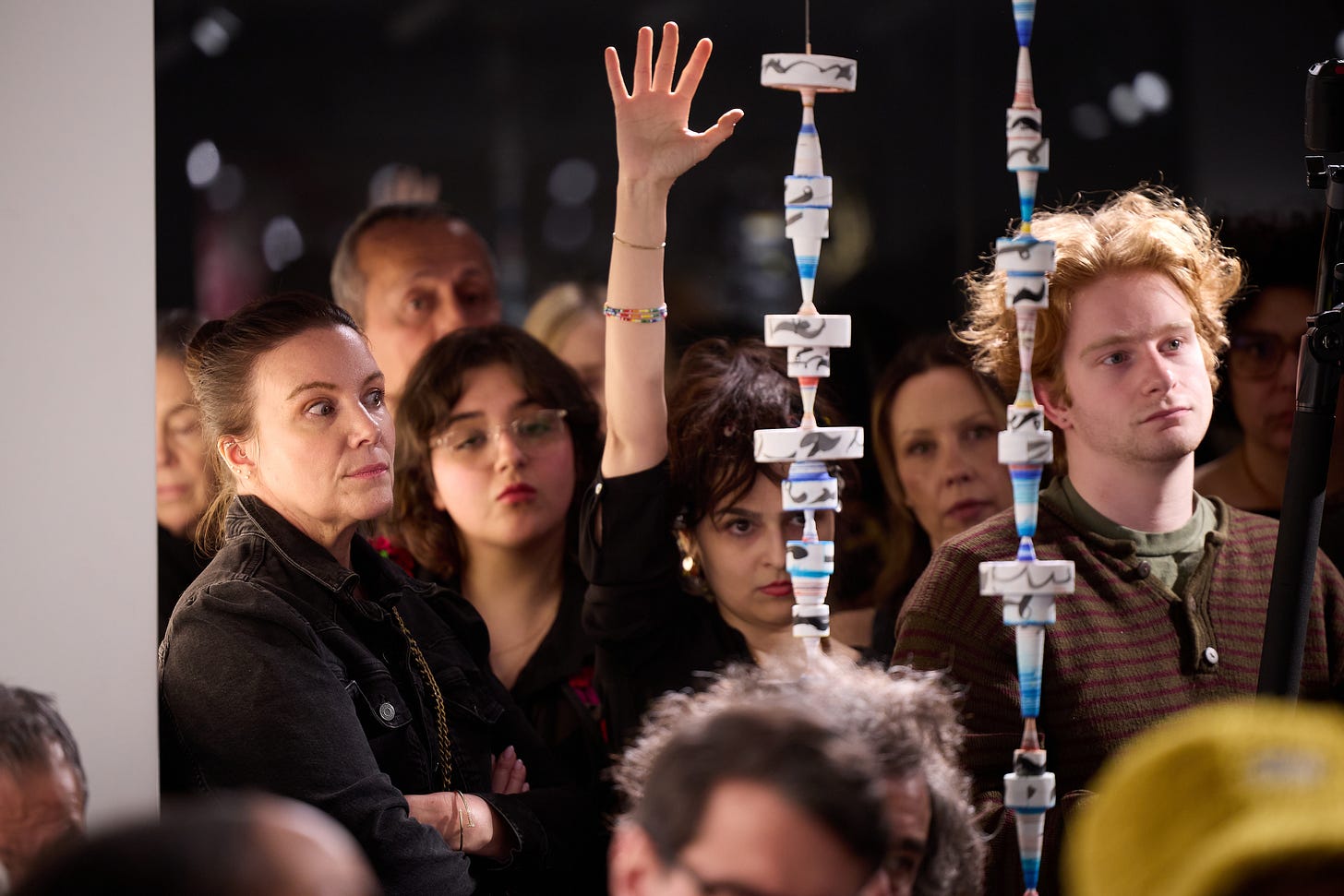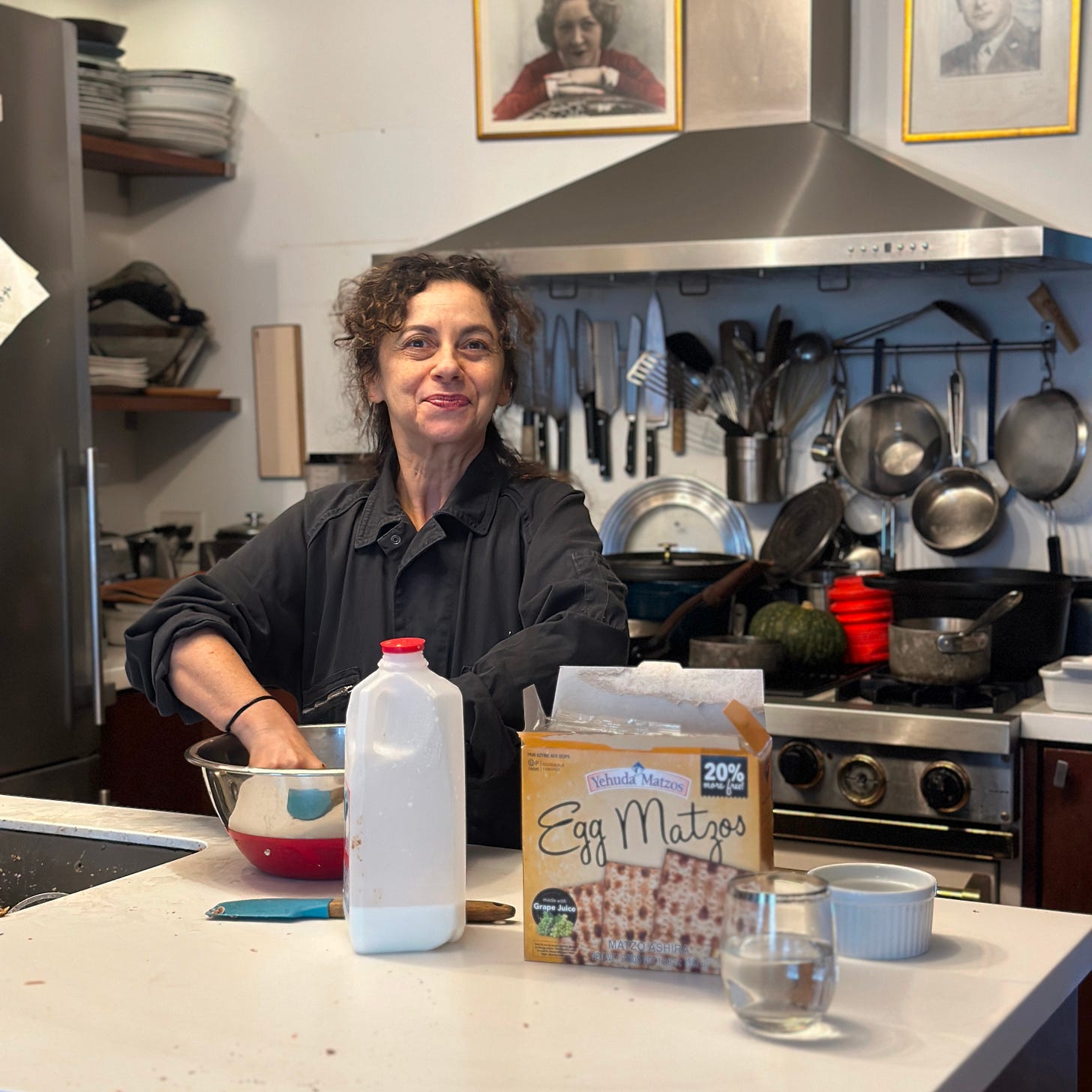Are We From Somewhere- Even If We Left For Somewhere else?
An invitation for artist Niyoosha Ahmadikhoo's workshop
Dear you, dear friend,
First of all, I want to begin with a massive THANK YOU for your wonderful support and response to my very first post on Substack. So many new subscribers, new followers, new friends. A very special one goes to Sophia Efthimiatou for her attentive listening and precious advice on this new writing adventure: she’s been pushing me for years to create a Substack and I was always responding with the Egyptian IBM*
Where are we from?
Egyptian? Can I consider myself an Egyptian? I was born and raised in France, lived in Alexandria from my teenage to mid 20s, moved to America for almost two decades now, became an American citizen, and married a Mainer. I was fed with Moloheya (I love) and Bamia (I loathe), I often burn bakhoor on Friday, I try to think in Arabic when I cook - as if my mother was next to me in the kitchen- but I mainly speak English now, and even lose some of my French. My lover thinks I’m soooo French but my French friends say I became telleuuuumeeennnnnt american. I even started to eat peanut butter recently. So where I am from?
This is the conversation we recently had with Claude Grunitzky - philanthropist, art lover, and President of Catharsis Arts Foundation - during a breakfast at One Girl Cookies in Boerum Hill.
On March 8, Grunitzky was moderating a discussion with Iranian artist Shirin Neshat. A question burst out from the audience, from another Iranian artist, Niyoosha Ahmadikhoo:
Hi, my name is Niyoosha and I research the performances of the ongoing Iranian renaissance post Jina Amini.
What I am witnessing in the performances that have been and are happening inside Iran every day is that women, especially younger women (and queer people), are putting their lives on the line and exposing their naked bodies in public. They also post semi-nude photos of themselves in urban and natural areas, as well as in their private spaces, on social media. There is a trend of posting photos in bikinis right now. They remove their clothes in defiance, in front of the regime’s forces, risking their lives again and again for their bodily autonomy. They get arrested, imprisoned in psychiatric centers, tortured, and some are even missing. […]
My question is, for people who are curators, artists in high places, policy makers, and space makers: how do we open and hold space for Iranian and Afghan female artists who want to do radical and avant-garde art with the body of a shia muslim woman? Not keep generating and exhibiting the “veiled” image of Iranian women, but the current version—because based on what we are seeing inside Iran, “Iranian woman wants to be naked!”
Two remarkable artists, from different generations, with different visions, living in the USA and deeply involved in the fight for freedom of their home country.
Are we doomed to become stateless and uprooted simply because we left our country, our native soil and embraced another one?
I remember Georges Kypreos, a colorful character, someone straight out of Lawrence Durrell’s Alexandria Quartet, responding when someone was asking him where he was from: “I’m Franco-Syro-Babylonian”.
You are invited to attend Niyoosha Ahmadikhoo’s workshop at Atelier Jolie
I have invited Ahmadikhoo for a three-day workshop Crossings in Slowness: An Ephemeral Trilogy at Atelier Jolie, as part of the current exhibition Strand for Women.
This one-time, site-specific sequence of happenings is a tribute to Iranian and Afghan women whose audacious emotions have fueled the force of rebellion through millennia. In three consecutive performance workshops, each two hours long, you will slow down—physically, emotionally, and very, very literally—while continuing to move. Creating an experimental installation with your collective bodies, you will learn a few ensemble-making techniques and expand your personal toolbox for processing and expressing deep and complex feelings through performative exercises.
The workshop is free, open to everyone, but with very limited number of spots.
We encourage you to book the full trilogy for a full experience but it’s not mandatory. You can attend only one or two workshops. Each one is about two hours.
Many details about the workshop and RSVP are here
Time to cook
Passover has started, and my friend Dara cam today at SAM to prepare Zalabia, this kind of donut made with matzah, milk, eggs, simple syrup and cinnamon. Yesterday she made me buñuelos, her version, very similar, very different.
Once again, two different visions, but the same goal.
Chag Pesach sameach!
Follow me on Instagram
The Invisible Dog
Lucien Chef Ambition
*I.B.M. Insha’llah, ‘Bukra,’ & ‘Ma’lesh, a typical Egyptian expression which roughly translate, respectively, as “God willing,” “tomorrow” and “no matter”. The ancient and poetic version of procrastinating.
Must watch
On French-German TV Arte
Iran: The Mullah, Women, and the Veil
In a changing Iran, where more and more women are removing their veils despite the clergy’s recommendations, conservatives are still trying to persuade.
Reporters Charles Emptaz and Olivier Jobard, spent two weeks immersed in this conservative Iran as it marked the 46th anniversary of the Islamic Revolution. Following a mullah who seeks to reconnect with a youth weary of conservatism, they capture a country in the midst of transformation—hit hard by sanctions, yet still resisting any political change.





Hello Lucien, toujours un plaisir de te lire ! What an amazing ID goes for a walk program 🙌👏 how do we book for Niyoosha Ahmadikhoo’s workshop ?Thanks 😘
Lucian I love rediscovering you here 💜